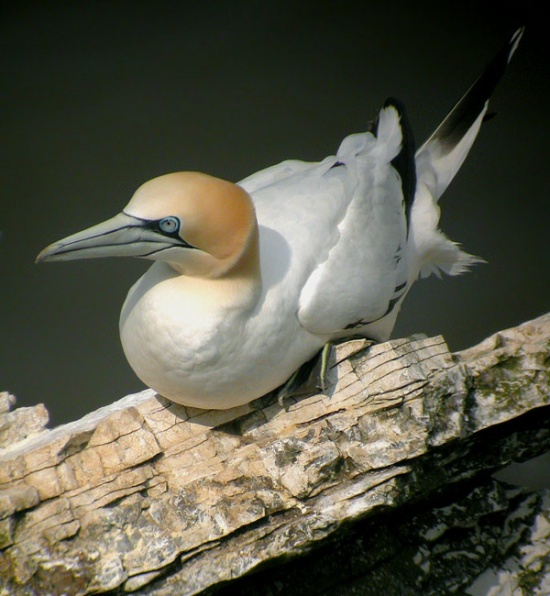m (→Diet) |
|||
| Line 22: | Line 22: | ||
====Diet==== | ====Diet==== | ||
Includes small fish, which it takes from a steep, high-speed dive. | Includes small fish, which it takes from a steep, high-speed dive. | ||
| + | Diving from a height of around 30 metres or less,and hitting the water at anything up to 70mph,a lot of these birds go blind quite young,from diving into the water. | ||
| + | |||
====Breeding==== | ====Breeding==== | ||
They normally nest in large colonies, on cliffs overlooking the ocean or on small rocky islands. | They normally nest in large colonies, on cliffs overlooking the ocean or on small rocky islands. | ||
Revision as of 18:51, 4 July 2009
- Morus bassanus
Identification
L. 87-100cm
Ws. 165-180cm
Adult
- White with black wingtips
- Light blue bill
- Bare, black skin around eye
- During breeding, head and neck are brushed with pale yellow
Immature
Dark brown in their first year, and gradually acquire more white in subsequent seasons until they reach maturity after five years.
Distribution
North Atlantic.
Taxonomy
Habitat
Isolated stacks or remote islands, sometimes on mainland cliffs. At sea when not breeding, over continental shelf. Occasionally on large inland waters as a result of severe weather.
Behaviour
Diet
Includes small fish, which it takes from a steep, high-speed dive. Diving from a height of around 30 metres or less,and hitting the water at anything up to 70mph,a lot of these birds go blind quite young,from diving into the water.
Breeding
They normally nest in large colonies, on cliffs overlooking the ocean or on small rocky islands.
Vocalisation
<flashmp3>06 - Sulidae- Northern Gannet.mp3</flashmp3>
Listen in an external program




